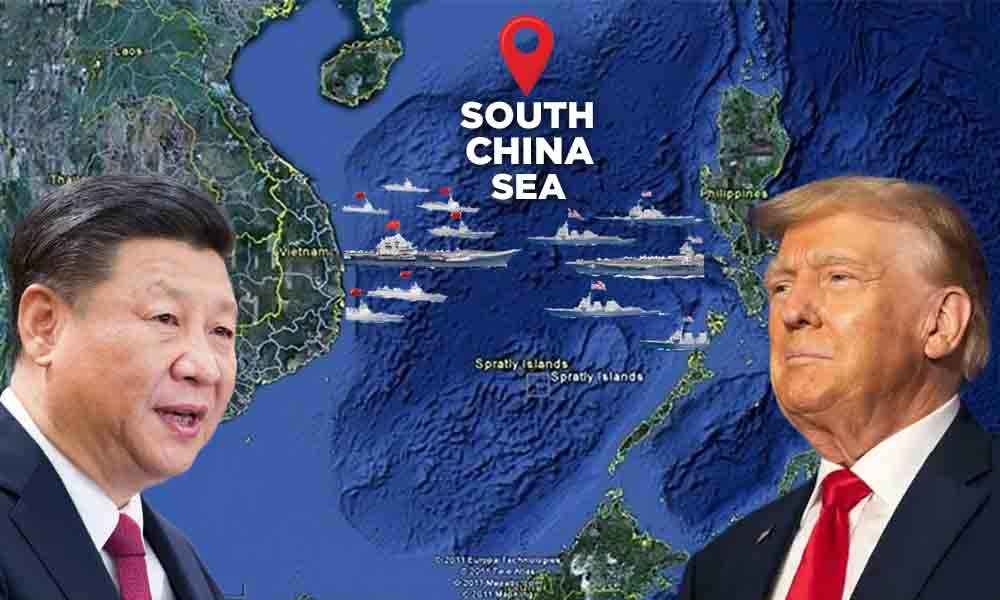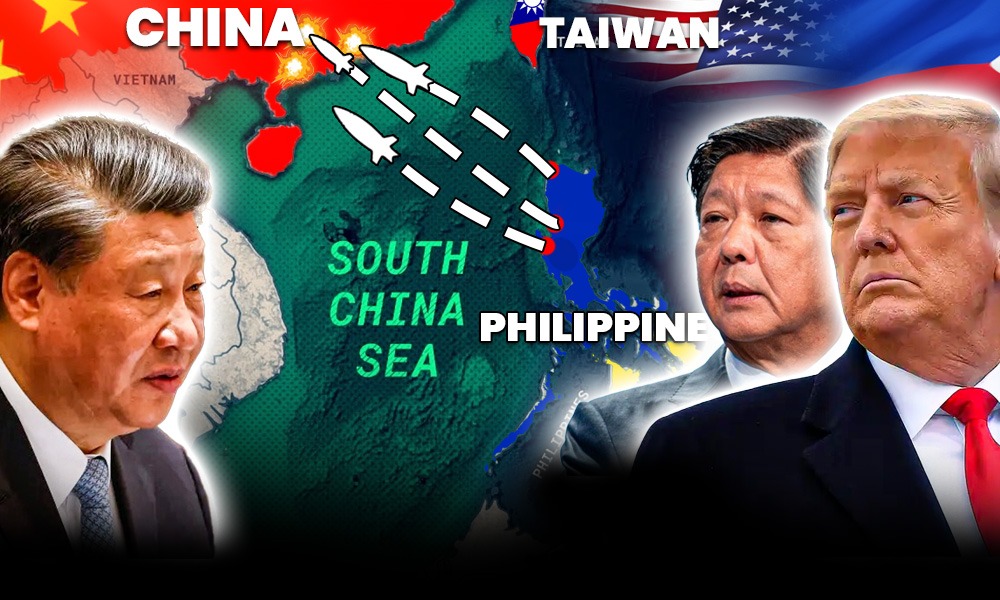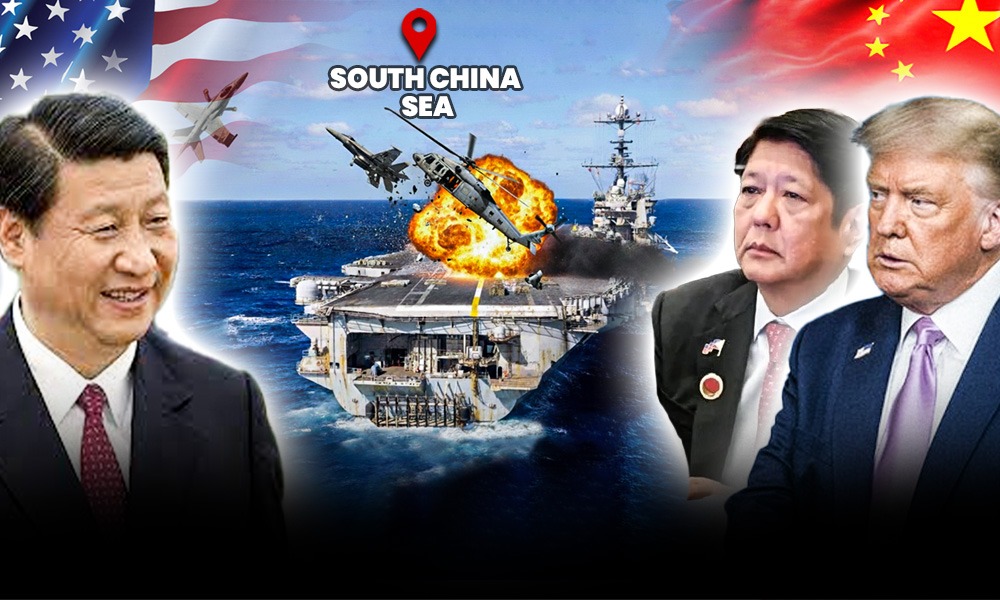The old fisherman cast his net into the waters at dawn, just as his ancestors had done for generations. But today, he wasn’t alone. A massive gray-hulled vessel loomed in the distance, its flag fluttering in the wind, warning him that these waters—waters his family had fished for centuries—were now “disputed territory.” Nearby, sleek warships from rival nations cut through the waves, their radar systems locked onto each other, while diplomats in faraway capitals debated maps and maritime law. The South China Sea, once a cradle of trade and livelihood, had become a high-stakes battlefield where history, power, and ambition collided.
For realists like John Mearsheimer and Stephen Walt, this scene is inevitable—a ruthless power struggle where military deterrence is the only way to maintain order. Institutionalists like G. John Ikenberry and Beth Simmons, however, argue that multilateral agreements and economic interdependence could prevent war, binding nations in a web of shared interests. Constructivists believe that ASEAN’s role in norm-building could gradually reduce tensions, fostering a culture of diplomacy over aggression. Yet, as warships shadow each other and air patrols grow more frequent, the future of the South China Sea remains uncertain. Will it be shaped by force, diplomacy, or an evolving regional order? The answer may decide the balance of power in the Indo-Pacific for decades to come.
An attack on Philippine forces will invoke our Mutual Defense Treaty.” – U.S. President Joe Biden
The South China Sea: A Contested Battleground
The South China Sea is more than just a strategic waterway, it’s a volatile arena where history, law, and military power collide. At the center of this struggle is China’s sweeping “Nine-Dash Line”, a self-declared boundary that covers nearly 90% of these waters. Citing ancient maps and historical records, Beijing insists on sovereignty over islands, reefs, and resources. However, the international community sees things differently. In 2016, the Permanent Court of Arbitration (PCA) ruled in favor of the Philippines, declaring China’s claims invalid under UNCLOS. Yet, China has outright rejected the ruling, doubling down on its presence with military patrols, artificial islands, and an expanding coast guard fleet.
We do not hope to have war, but we are not afraid of it.” – China’s Ministry of National Defense (2024)
These tensions have played out in multiple high-stakes confrontations. The Scarborough Shoal Standoff in 2012 saw China seize control of the disputed reef after a tense naval standoff with the Philippines, leading to international arbitration. More recently, in 2023, Chinese maritime forces aggressively blocked Filipino resupply missions to the Second Thomas Shoal, sparking fears of escalation. Meanwhile, from 2019 to 2023, Chinese survey ships and warships repeatedly clashed with Vietnamese forces near Vanguard Bank, an energy-rich area vital to Vietnam’s economy.
With each new incident, the South China Sea inches closer to becoming a full-blown conflict zone. The question remains: will diplomacy and legal frameworks be enough to resolve these disputes, or will military power decide the fate of one of the world’s most contested waterways?
Escalating Tensions in the South China Sea
The South China Sea has become an increasingly volatile region in 2024 and early 2025, with a surge in military confrontations and strategic maneuvering by regional and global powers. Tensions have escalated due to China’s assertive territorial claims, the Philippines’ growing military ties with the United States, and the increasing presence of allied naval forces in the region. The struggle for control over this strategically vital maritime zone continues to shape geopolitical dynamics.
Military activities in the region have reached unprecedented levels. In 2024, there were nearly 30,000 military aircraft sorties over the South China Sea, with approximately two-thirds conducted by regional states and the remainder by extra-regional powers, predominantly the United States. Over 20,000 ship-days of naval surface force presence were recorded, highlighting the growing density of military operations. China has intensified its maritime patrols, while the U.S. and its allies have responded with increased Freedom of Navigation Operations (FONOPs).
Several high-profile incidents have further heightened tensions. On June 17, 2024, a clash between Chinese and Filipino vessels near the Second Thomas Shoal resulted in injuries to Filipino personnel. Between June and November 2024, at least seven close interception incidents were recorded, raising concerns over potential escalation. More recently, in February 2025, a Chinese military helicopter conducted aggressive maneuvers near a Philippine aircraft patrolling the disputed Scarborough Shoal. This incident prompted strong condemnations from both the Philippines and the United States, further straining diplomatic relations.
The strategic posturing of various nations continues to shape the region’s security landscape. The Philippines has deepened its defense ties with the United States, expanding the Enhanced Defense Cooperation Agreement (EDCA) in 2023 to grant U.S. forces access to additional military bases near the South China Sea. This move has allowed for an increased American presence, directly challenging China’s growing influence. Meanwhile, nations such as Japan, Australia, and the United Kingdom have expanded their naval presence, regularly participating in joint exercises aimed at counterbalancing Beijing’s assertiveness.
With military activities at an all-time high, the South China Sea remains a flashpoint for potential conflict. The possibility of miscalculations or unintended escalation looms large, making diplomatic engagement and crisis management more crucial than ever. As 2025 unfolds, the region’s future will largely depend on the balance between deterrence, diplomacy, and the evolving power dynamics among competing claimants and external actors.
Resource Competition & Environmental Concerns in the South China Sea
The South China Sea is not only a geopolitical battleground but also a region rich in energy resources and marine biodiversity. However, intense competition over oil, gas, and fisheries has fueled disputes between claimants, leading to environmental degradation and economic tensions. As nations race to secure their energy needs, ecological damage continues to mount, threatening the livelihoods of millions who depend on the sea.
Oil and gas exploration remains a major flashpoint. China’s state-owned China National Offshore Oil Corporation (CNOOC) and Vietnam’s PetroVietnam have repeatedly clashed over drilling rights, particularly near Block 136-03 in the Spratly Islands, an area claimed by both nations. The Philippines, facing the depletion of its Malampaya gas field, has intensified its search for alternative reserves in contested waters, prompting strong opposition from Beijing. In recent years, China has used its maritime militia and coast guard vessels to disrupt survey missions, delaying potential energy projects and reinforcing its dominance over the sea’s resources.
The region’s once-thriving marine ecosystem is in crisis. Overfishing, illegal fishing, and habitat destruction have led to a 70% decline in fish stocks since 1950. Chinese maritime militia vessels, often disguised as fishing boats, frequently engage in destructive practices such as giant clam harvesting, which devastates coral reefs. Satellite data shows that nearly 40% of the region’s coral reefs have suffered irreversible damage, largely due to dredging for artificial island construction and climate change-related stressors.
As resource competition intensifies, balancing economic interests with environmental sustainability remains a significant challenge. Without cooperative management of the South China Sea’s resources, the region risks not only geopolitical instability but also the collapse of its marine ecosystem, further exacerbating food insecurity and economic hardship for millions who depend on its waters.
Diplomatic Efforts & International Law: Struggles for Stability
While diplomatic initiatives and international law aim to manage tensions in the South China Sea, enforcement challenges and stalled negotiations continue to hinder progress. Despite a 2016 Permanent Court of Arbitration (PCA) ruling that invalidated China’s sweeping claims, Beijing has refused to comply, and the lack of an enforcement mechanism within the United Nations Convention on the Law of the Sea (UNCLOS) has left regional states with little recourse.
If ASEAN does not stand together, we risk becoming spectators in our own region.” – Singapore’s Prime Minister Lee Hsien Loong (2023)
ASEAN has attempted to mediate the crisis by pushing for a South China Sea Code of Conduct (COC) to establish rules for dispute resolution and resource management. However, negotiations have been sluggish, with China resisting efforts to make the COC legally binding. Beijing prefers vague, non-enforceable agreements that allow it to maintain strategic flexibility while continuing its expansionist activities. As a result, despite diplomatic overtures, no concrete mechanism exists to prevent conflicts or ensure compliance with international rulings.
With multilateral efforts stalling, individual nations have sought bilateral and trilateral security arrangements to counterbalance China’s influence. The Philippines, the United States, and Japan have strengthened defense ties, while Vietnam has deepened military partnerships with India and Australia. However, without a strong regional legal framework, the risk of unilateral actions and military confrontations remains high. The future of diplomacy in the South China Sea will depend on whether ASEAN and global powers can overcome Beijing’s obstructionism and enforce international norms effectively.
Factors Shaping the Future Trajectory
The future trajectory of the South China Sea will be shaped by China’s growing dominance, U.S.-led countermeasures, and ASEAN’s ability to navigate regional diplomacy. Beijing continues to employ its “salami-slicing” strategy—gradually asserting control through militarization, economic coercion, and maritime pressure while avoiding full-scale war. Its artificial islands, expanded naval capabilities, and the deployment of maritime militias have cemented a formidable presence, challenging regional actors. Through the Belt and Road Initiative (BRI), China has further expanded its influence by making nations economically dependent, limiting their willingness to confront Beijing’s aggressive posturing. As President Xi Jinping declared in 2023, “China will never relinquish sovereignty over the South China Sea,” signaling a firm, long-term commitment to control over the contested waters.
In response, the U.S. and its allies have intensified counterstrategies, strengthening military partnerships and reinforcing deterrence measures. The Quad alliance—comprising the U.S., Japan, India, and Australia—has expanded security cooperation, increasing naval patrols and intelligence-sharing. AUKUS, the trilateral pact between the U.S., UK, and Australia, is enhancing military capabilities, including the deployment of nuclear-powered submarines to the Indo-Pacific. The U.S.-Philippines Mutual Defense Treaty (MDT) has also seen renewed importance, with Washington reaffirming its commitment to defend Manila in case of an armed attack, leading to expanded joint military exercises and a stronger U.S. presence in Philippine bases.
Despite these countermeasures, ASEAN remains divided, struggling to present a unified stance against Beijing’s assertiveness. Countries like Vietnam and the Philippines push for stronger resistance, while others, such as Cambodia and Laos, lean toward China due to economic ties. The long-awaited Code of Conduct (COC) for the South China Sea remains bogged down in negotiations, with China resisting any legally binding framework that could restrict its activities. As Beijing tightens its grip and great-power competition escalates, the region faces an uncertain future where diplomacy, deterrence, and economic leverage will determine whether the South China Sea remains a contested flashpoint or transitions into a more stable, rule-based environment.
Future Scenarios: A Range of Outcomes
February 2025, the South China Sea remains a focal point of geopolitical tension and environmental degradation. Recent incidents have exacerbated regional disputes, notably a confrontation on February 18, 2025, when a Chinese Navy helicopter intercepted a Philippine civilian aircraft near the contested Scarborough Shoal. The Philippines condemned this “blatantly hazardous action,” while China accused the Philippine aircraft of “illegally intruding” into its airspace.
Environmental concerns have intensified, with over 7,000 acres of coral reefs destroyed due to activities like dredging and landfill by China, Vietnam, the Philippines, Malaysia, and Taiwan. This represents an increase of 800 acres from the 6,200 acres reported at the end of 2023. China and Vietnam are responsible for 65% and 33% of this destruction, respectively.
In response to China’s assertive actions, the United States and its allies have increased their military presence in the region. On February 11, 2025, a Royal Australian Air Force P-8A Poseidon experienced an “unsafe and unprofessional” interaction with a Chinese PLA-AF J-16 fighter aircraft, during which the Chinese aircraft released flares in close proximity to the Australian plane.
These developments underscore the escalating tensions and environmental challenges in the South China Sea, highlighting the urgent need for diplomatic engagement and sustainable management practices to address the complex issues facing the region.
End Note
The South China Sea remains a volatile flashpoint where geopolitical rivalries, economic interests, and military strategies collide. China’s assertive territorial claims, backed by military expansion and coercive tactics, continue to challenge regional stability. Meanwhile, the U.S. and its allies ramp up countermeasures, reinforcing defense agreements and maintaining a naval presence to deter Chinese aggression. ASEAN’s fragmented response and stalled Code of Conduct negotiations underscore the difficulties of diplomatic resolution. Resource competition, environmental degradation, and legal disputes further complicate the landscape. While the risk of military conflict looms, diplomatic engagement, strategic balancing, and adherence to international law remain crucial in shaping a more stable and predictable future for the region.



